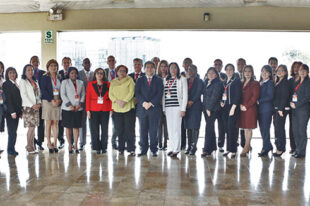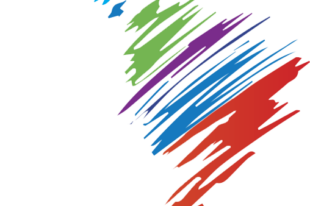Rethinking Dialogue in Times of Enhanced Stakeholder Integration, Modern Technologies

by Dr. Margit Kraker, INTOSAI General Secretariat and President of the Austrian Court of Audit
As we approach the International Organization of Supreme Audit Institutions (INTOSAI) XXIII Congress (INCOSAI) with quick strides, it gives me great pleasure to seize this opportunity to take stock of the organization’s progress over the last couple of years and look to the road ahead.
When I assumed office as INTOSAI’s Secretary General in the summer of 2016, the organization was in the midst of restructuring its operations and redefining its outreach emphasis. INTOSAI’s vision to raise its profile and become a credible, trusted partner in the international community called for enhanced and effective cooperation among its different bodies. The vision also required a clear definition of its focus areas. With the adoption of its third strategic plan (Strategic Plan 2017-2022) at INCOSAI XXII, INTOSAI succeeded in both. By establishing well-designed structures for goal cooperation and standard setting, INTOSAI attained an unprecedented level of integration.
The INTOSAI Strategic Plan 2017-2022 defines clear objectives that provide the basis for various INTOSAI bodies to perform their tasks. The enhanced cohesion of INTOSAI’s work becomes especially visible in the common reporting framework through which INTOSAI bodies and Regional Organizations demonstrate shared efforts to conduce to strategic goal implementation.
The first-ever INTOSAI Performance and Accountability Report (PAR), established in close cooperation among the Chairman and Vice-Chairman of INTOSAI’s Policy, Finance and Administration Committee and General Secretariat, contained contributions by INTOSAI’s Chairman and Vice-Chairman, Goal Chairs, Regional Organizations, INTOSAI Development Initiative and Governing Board (GB) members. The PAR, vital proof of an inclusive, clear reporting approach, will be prominently placed on INTOSAI’s website for external stakeholder availability. In doing so, we meet the level of transparency and accountability expected from us as a model international organization.
Similar efforts related to strengthened cohesion and coherence are evident in member Supreme Audit Institution (SAI) contributions to Sustainable Development Goals (SDG) implementation. Progress reached in this area and the diverse outcome documents, including national SDG preparedness and activity reports, are available via numerous INTOSAI media outlets.
Against the backdrop of this broad variety of INTOSAI communication channels, the old adage “too many cooks in the kitchen” quickly comes to mind. This notion prompted a discussion on INTOSAI communication during the 71st GB meeting in Moscow, where GB members exchanged views on vital questions for fundamental issues—defining internal and external stakeholders and developing the core messages INTOSAI wants to deliver to those groups; product accessibility and user-friendliness; language consistency; and information and initiative awareness.
As the organization was established to primarily serve the audit community through knowledge sharing and capacity building, it will be essential to re-examine the presentation and placement of valuable expert knowledge and experience provided by different INTOSAI bodies.
GB members also considered language consistency, noting that, as the professional umbrella organization for the international audit community, INTOSAI is in an influential position to shape audit-specific terminology.
The importance of awareness, particularly that of all activities and outcome products, was also deliberated, and cultivating such awareness requires constant communication and information sharing. As our tasks grow steadily, and we are expected to respond to varied emerging issues often linked to modern phenomena (digitalization, new technologies), communication will remain a key challenge.
While “too many cooks in the kitchen” can present problems, our communication channel diversity is not necessarily a drawback. Since many problems can only be solved on a regional, even national, level, we must accept that INTOSAI products will come in different shapes that are formed by member SAI multifaceted systems. This aspect accurately summarizes the motto of INTOSAI’s professionalization efforts, “Global profession, local solution.” Nevertheless, present deliberations will certainly contribute to advancing INTOSAI’s outreach.
The level of integration attained in INTOSAI’s strategic operations and reporting mechanisms is a highly favorable sign INTOSAI will continue to join forces and elaborate systems for effective, streamlined presentations that take into account both target audiences and product purpose. In this regard, I would like to thank all INTOSAI member SAIs involved in sharing the manifold activities carried out by the audit community.
INTOSAI’s performance benefits SAIs and translates into valuable input for national governments. INCOSAI XXIII will focus on topical themes closely tied to issues we currently face: “Information Technologies for the Development of the Public Administration,” which incorporates digital data application and the role of big data; and “The Role of the Supreme Audit Institutions in the Achievement of the National priorities and Goals,” which includes strategic audit, foresight and analytics.
These issues are crucial for INTOSAI subject-specific progress and discussions with national governments and key international partners, including the United Nations.
I look forward to continuing this path of development with all INTOSAI member SAIs, as well as internal and external stakeholders. I am convinced INTOSAI will succeed in shaping dialogue with all interested parties in a way that considers all needs while preserving the values of inclusivity, integration and diversity.





